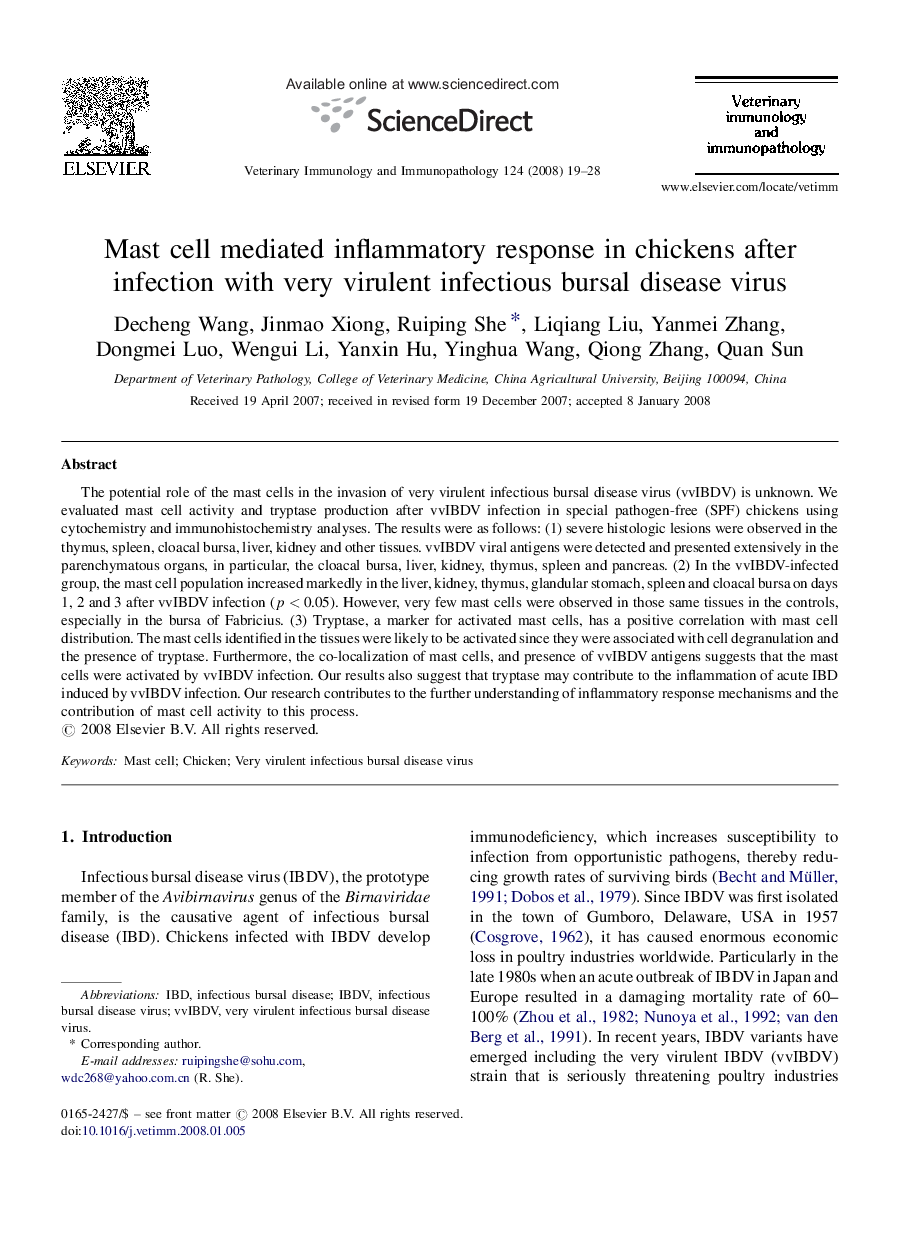| Article ID | Journal | Published Year | Pages | File Type |
|---|---|---|---|---|
| 2463046 | Veterinary Immunology and Immunopathology | 2008 | 10 Pages |
The potential role of the mast cells in the invasion of very virulent infectious bursal disease virus (vvIBDV) is unknown. We evaluated mast cell activity and tryptase production after vvIBDV infection in special pathogen-free (SPF) chickens using cytochemistry and immunohistochemistry analyses. The results were as follows: (1) severe histologic lesions were observed in the thymus, spleen, cloacal bursa, liver, kidney and other tissues. vvIBDV viral antigens were detected and presented extensively in the parenchymatous organs, in particular, the cloacal bursa, liver, kidney, thymus, spleen and pancreas. (2) In the vvIBDV-infected group, the mast cell population increased markedly in the liver, kidney, thymus, glandular stomach, spleen and cloacal bursa on days 1, 2 and 3 after vvIBDV infection (p < 0.05). However, very few mast cells were observed in those same tissues in the controls, especially in the bursa of Fabricius. (3) Tryptase, a marker for activated mast cells, has a positive correlation with mast cell distribution. The mast cells identified in the tissues were likely to be activated since they were associated with cell degranulation and the presence of tryptase. Furthermore, the co-localization of mast cells, and presence of vvIBDV antigens suggests that the mast cells were activated by vvIBDV infection. Our results also suggest that tryptase may contribute to the inflammation of acute IBD induced by vvIBDV infection. Our research contributes to the further understanding of inflammatory response mechanisms and the contribution of mast cell activity to this process.
